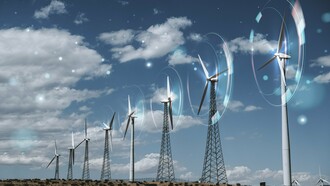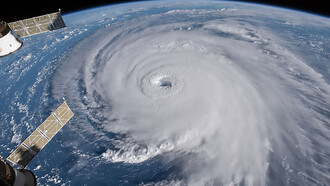According to the International Energy Agency, energy efficiency spending will top one trillion dollars in the last four years (2000-2023). This includes building retrofits, infrastructure projects, public transport, and electric vehicle support. Direct government support accounted for a quarter of the amount and helped mobilize three-quarters consisting of private spending and additional (regional and local) government support (IEA, 2022). The present spending on energy efficiency is impressive but the growth in investments must be much higher to reach the net zero emission scenario in 2050.
It pays to save energy in every sector. Energy-efficient manufacturing facilities improve the competitiveness of industry. At home, it reduces utility bills, transportation costs, and time. Reducing fuel consumption results in cleaner air, water, and land that directly improves our health. It is a win-win action and increasingly a bipartisan priority.
For US families, the key opportunities are summarized with ample hyperlinks. The general framework is to understand your situation, make an energy audit of your home, see what incentives are available, get several contractors to make offers on your home improvements, select the method of financing and contractor, and make the indicated investments. Also your family transportation needs are analyzed, and if needed, the type of car is chosen.
Our family began by evaluating our transportation needs: less night driving, more public transport, and taxis. My wife loves to walk, and we take the scenic routes. One cannot over-emphasize the importance of parks and green spaces: you are and feel healthier (Twohig-Bennett & Jones, 2018). If you need a car, consider an electric vehicle. For the purchase of a new clean vehicle, consumers can receive a tax credit of up to $7,500. (see Inflation Reduction Act below). An excellent site with all the models (EVs and others) and easy comparisons is find-a-car tool. My family purchased one of the first hybrids in town some 17 years ago, and now we are going for a small EV for the city. For longer trips, we use trains or occasionally rent a car.
Even if you have made some home energy improvements, some more are likely to be profitable. If you have technical skills, I recommend a DOE guide for a do-it-yourself home audit. Otherwise, there are many sites for services of home energy assessments.
The potential energy savings from reducing drafts in a home may range from 10% to 20% per year, and the house is generally much more comfortable afterward. Heat loss through the floor, ceiling, and walls in your home could be very large if the insulation levels are less than the recommended minimum. Inspect heating and cooling equipment annually, or as recommended by the manufacturer. If you have forced-air equipment, check your filters, and replace them as needed. Heat pumps offer an energy-efficient alternative to furnaces and air conditioners for all climates. We replaced our gas heating system with heat pumps for heating and cooling. The system works well although we should have included all areas of the house. Our next project is to insulate better.
Energy for lighting accounts for about 10% of your electric bill. Examine the light bulbs in your house and consider replacing inefficient bulbs with a more efficient choice. Study the appliances and electronics in your home, and you can estimate their energy use. When shopping for an appliance, consider the purchase price together with the features that can help ensure low operating costs.
In addition to helping you with an energy audit, a home energy contractor usually knows all the government and state incentives available for the different kinds of improvements. He will offer you a plan of investment, and it is good to get several contractors’ offers for quality control. There are various means of financing energy efficiency: doing it yourself (without a loan), obtaining a loan or mortgage for the improvements, and using energy efficiency as a service. Financing it yourself is simple and appropriate for small investments such as new appliances; it is more demanding for major modifications to your home. The DOE has an excellent site on financing and incentives with various options, including a database of state incentives for efficiency and renewables and one for federal tax credits and incentives. Also, at the national level, the site illustrates opportunities of the Inflation Reduction Act of 2022 for different kinds of improvements.
Energy efficiency as a service (EEaaS) is where the service provider installs the improvement in a customer's facilities, and the provider owns the equipment for the duration of the contract. In exchange, the customer regularly pays the provider a fee, which can be fixed or based on the savings. When the contract expires, the customer can renew the contract, purchase the equipment at a fair market value accounting for depreciation, or less frequently return the equipment. Now it is being used for larger customers such as office buildings and retail stores. The idea is to accelerate the acceptance of energy savings by minimizing capital requirements. Duke Energy One and Seattle City Lights offer EEaaS (Henner & Carter, 2022).
For our Italian readers, the Italian Eco Bonus program for housing, with up to 95% tax deductions is still operative; it is Europe's largest home energy improvement initiative. ENEA helps in applying for this measure. An incentive of up to 5000 euro is also available for EVs.
Don’t miss out! Save money and the environment with energy efficiency.
References
Henner, N., Carter, M.R, 2022, Utilities Show Promise Using Innovative Financing for Efficiency Efforts, ACEEE Blog March 8.
IEA, 2022, Final Report Energy Efficiency 2022, December 2022.
Twohig-Bennett, C., Jones A. (2018), The health benefits of the great outdoors: A systematic review and meta-analysis of greenspace exposure and health outcomes, Environmental Research, Volume 166, Pages 628-63.















